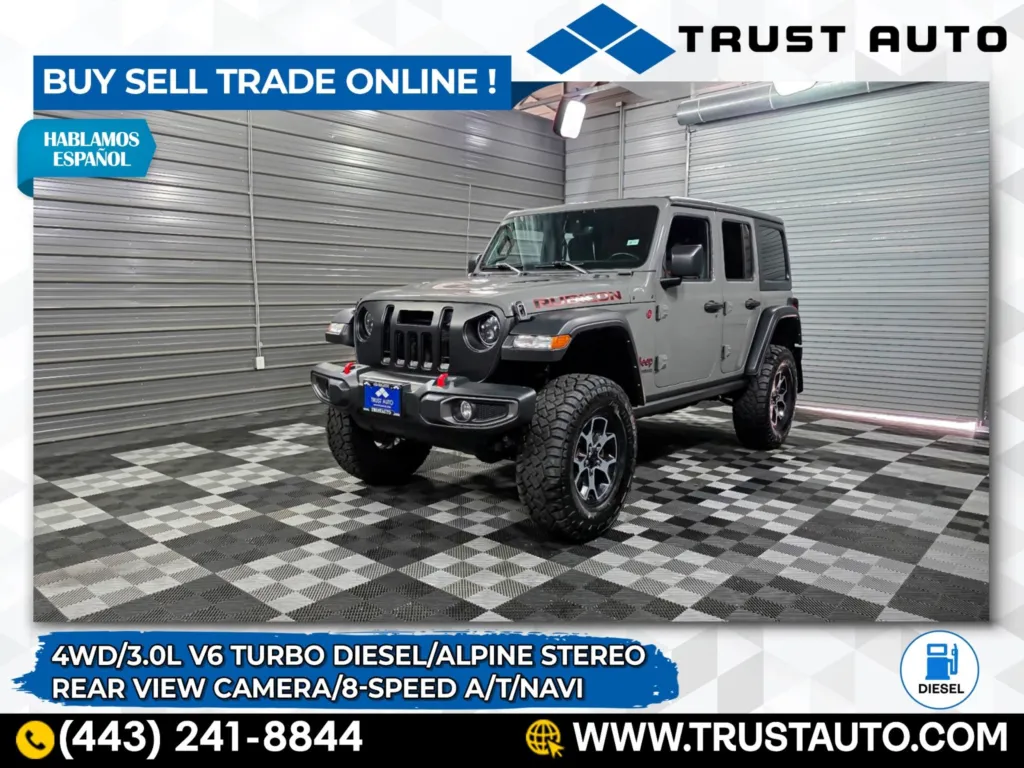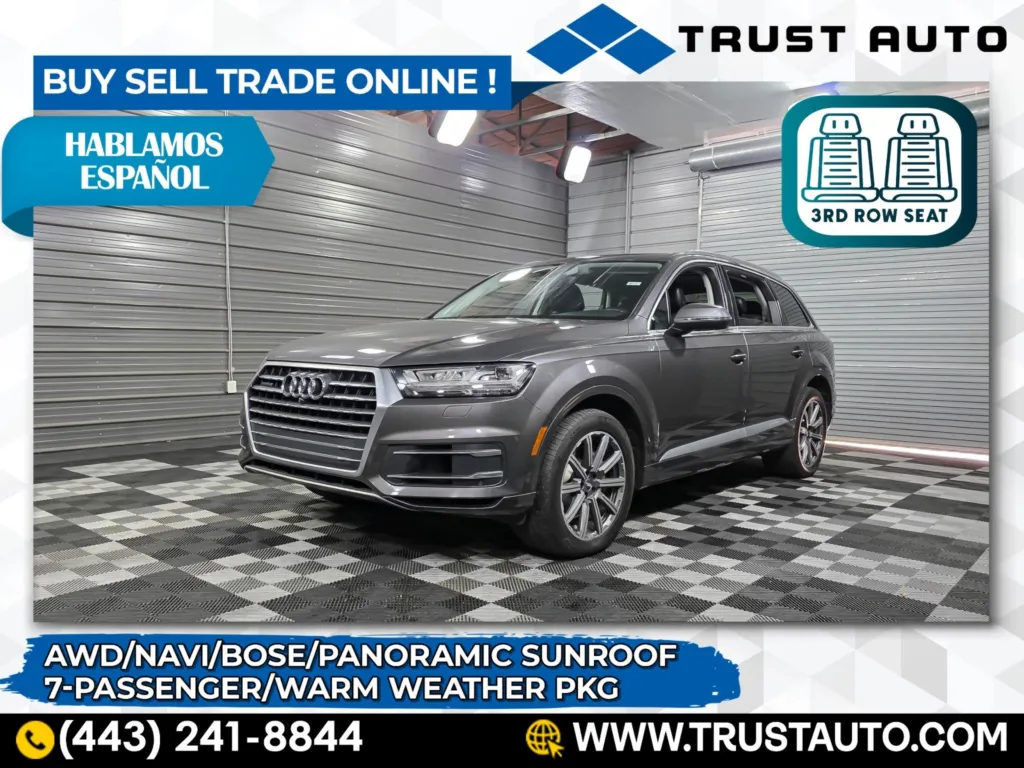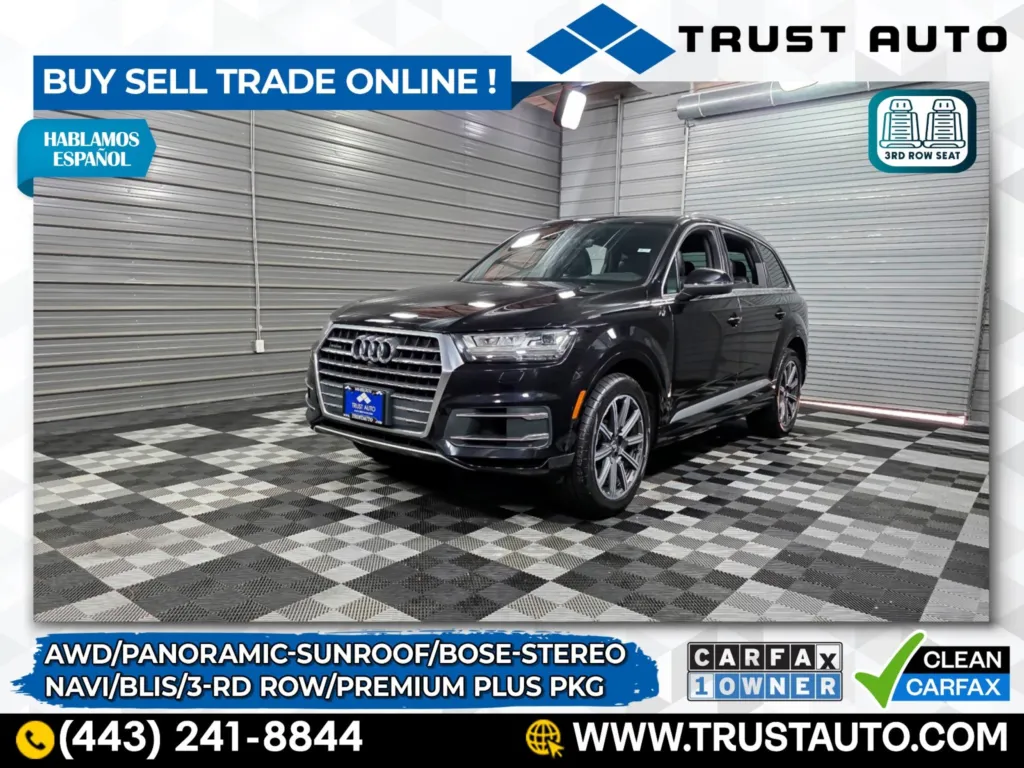SUV Vs. Crossover: What's The Difference?
Table of Contents
- SUV Vs. Crossover: What’s The Difference?
- What is an SUV?
- What is a Crossover?
- SUV Advantages and Disadvantages
- Advantages of SUVs:
- Disadvantages of SUVs:
- Crossover Advantages and Disadvantages
- Advantages of Crossovers:
- Disadvantages of Crossovers:
- SUV or Crossover: Which To Buy?
- Buying a Used SUV or Crossover at Trust Auto

SUV Vs. Crossover: What’s The Difference?
SUVs and Crossovers are two types of multi-purpose vehicles that are primarily very different. However, the continuous development of both platforms has blurred the line between them. So much so that it’s not weird for manufacturers to advertise one vehicle as both an SUV and crossover at the same time.
But SUVs and crossovers are inherently different. In this article, “SUV vs. Crossover: What’s the difference?” We will list some of the contrasts.
What is an SUV?
An SUV, which stands for a sport utility vehicle, is an automobile made to handle different types of work in different environments. An SUV is as fast and agile as a car, can carry and tow weights similar to a pickup truck, and can handle different terrains like an ATV (all-terrain vehicle).
Compared to a crossover, an SUV is usually a lot bigger, bulkier, more powerful, and can handle rough terrains while being more spacious and comfortable. But what defines the difference is the body structure.
An SUV is made on a “body-on-frame” architecture, a type of construction where everything from the engine to the body is put on a metal frame (chassis). This type of construction was very prevalent in the 20th century but now is mainly used for trucks and heavy-duty machines.
Plus, a body-on-frame structure allows for a more rigid build with better towing and hauling capacity. It also enables vehicles to have higher ground clearance. This is why SUVs true to their genes, like the Chevy Suburban, Chevy Tahoe, Jeep Wrangler, Cadillac Escalade, and Ford Bronco, are still very sought-after vehicles.
Another feature that distinguishes between SUVs and crossovers is the drivetrain. While some modern SUVs feature all-wheel drive (AWD), a typical SUV is defined by a four-wheel drive (4WD) drivetrain, something built to handle extreme off-roading.
Trust Auto Tip: Check out our article AWD Vs. 4WD: The Ultimate Guide .
What is a Crossover?
A crossover, crossover SUV, or compact utility vehicle is the same thing. Unlike the SUV, a crossover is built on a “unibody” or unitary architecture, which means the body and the frame are one single structure rather than two different units like body-on-frame.
This type of construction is lightweight and offers optimal cabin and cargo space, even in compact styling. Compared to an SUV, crossovers are smaller, lighter, and less off-road capable vehicles designed for more urban needs.
While crossovers first began to appear in the 1960s, the first modern crossover is generally considered to be the 1980 AMC Eagle. Soon after, unibody construction became the dominant approach for all types of vehicles, including sedans and hatchbacks.
Today, a crossover is defined as a passenger utility vehicle made on a unibody or car platform. Simply put, when you merge a scaled-down SUV body with a car chassis, you get a crossover. They are wider and more spacious than passenger cars while being smaller, lighter, faster, and more fuel-efficient than SUVs. For many, crossovers are the best of both worlds. A crossover can handle urban, suburban, and off-road driving conditions, tow heavier weights, and even drive reasonably well on a racetrack.
A crossover typically has an AWD drivetrain, but it’s not uncommon to find models with rear-wheel drive, front-wheel drive, or 4WD. Some of the most popular crossovers in the U.S. include the Ford Explorer, Toyota Highlander, Chevrolet Equinox, Honda CRV, Ford Escape, Nissan Rogue, Toyota RAV4, and Lexus RX350.
SUV Advantages and Disadvantages
When put against cars, hatchbacks, or crossovers, SUVs have a lot of benefits, but they do have drawbacks as well. Here is a list of advantages and disadvantages of SUVs.
Advantages of SUVs:
- Tons of space: The biggest advantage of owning an SUV is the extreme amount of space you get. Whether it’s cabin space or cargo space, SUVs are bigger in both areas. Depending on the size and type of SUV, you can fit up to eight people inside or get more than 100 cubic feet of cargo space.
- Rugged build quality: SUVs are big and bulky machines designed to handle extreme road and weather conditions. They are made of highly durable steel and aluminum alloys for better rigidity. The body-on-frame structure also provides sturdiness and a higher tolerance capacity. The simple design of such systems also makes it easier to repair SUVs.
- Good off-roading ability: One of the reasons people buy SUVs is because of exceptional off-roading handling. The 4×4 drivetrain makes SUVs capable of handling rough trenches, mud, snow, or sand. Higher ground clearance with powerful engines also aids in handling steep angles and uneven terrain.
- Higher towing capacity: A full-size SUV, in general, can tow up to 10,000 pounds because the body-on-frame structure was initially used for trucks. But using the same architecture with an SUV enables them to provide towing and hauling capacities that far exceed what’s available in most other passenger vehicles.
Disadvantages of SUVs:
- Too big for cities: SUVs, when compared to crossovers, are a lot bigger. Even a midsize SUV can be as long as 196.5 inches and 78.0 inches wide. The greater dimensions make them hard to maneuver and even harder to park. Full-size SUVs especially can be a burden in congested city settings.
- Poor fuel economy: An SUV can weigh anywhere between 3000-6000 pounds. The sheer size of the vehicles makes them less aerodynamic, and the larger engines make SUVs less fuel-efficient than crossovers.
- Higher cost of ownership: The cost of owning an SUV is more than that of an average sedan, hatchback, or crossover. This is due to increased fuel consumption and the need for more significant quantities of oil and other fluids and larger, more expensive tires.
Crossover Advantages and Disadvantages
Crossovers have a lot of advantages over SUVs when used in urban and suburban environments. But they are also limited in specific, making them more suitable for less-rural environments. Having a smaller body also gives them better driving dynamics and increased maneuverability.
Advantages of Crossovers:
- Good cabin and cargo space: While crossovers are smaller than SUVs, they are big enough to provide ample cabin and cargo space. Even smaller subcompact crossovers are fine for a family of four. Full-size crossovers like the Honda Pilot and Audi Q7 can fit up to seven people. Thanks to folding second-and third-row seats, crossovers offer good cargo space. Plus, larger crossovers can tow up to 6,000 pounds making them more than capable of handling a vacation-friendly trailer.
- Better fuel efficiency: Crossovers are more fuel-efficient than SUVs. This is due to a lighter overall weight and a more aerodynamic body. In addition, many crossovers are available with a fuel-saving hybrid powertrain.
- 5-Star safety ratings: Automakers build crossovers with family transportation in mind, so often, these vehicles are designed at the outset to achieve 5-star safety ratings in government and third-party crash tests. The unibody structure also better enables crumple zones to be integrated into these vehicles.
Disadvantages of Crossovers:
- Not suitable for extreme off-roading: While crossovers are ideal for handling modest trailing and off-roading, they lack the rigidity and flexibility to handle extreme loads and off-road conditions. In general, lower ground clearance, more modest power, and less traction functionality limit what a crossover can do.
- Higher repair costs: In a collision, the entire unibody platform absorbs the brunt of the impact. Integrated crumple zones minimize the transfer of crash energy into the cabin but also make the crash repair more expensive.
SUV or Crossover: Which To Buy?
With the difference between SUVs and crossovers clear, the only thing left is to find a vehicle suitable for you. And the quickest way to know that is by identifying your requirements.
Simply put, if you are looking for a daily driver, a crossover is an ideal option. Not only do they have good space and better fuel economy, but crossovers are smaller in size and ideal for suburban and urban use. Even for regular highway rides and light-duty adventure trips, a crossover can meet most needs.
But, if you require a sturdier vehicle for heavy-duty carrying or serious trailering but still need something for everyday use, then an SUV is an obvious choice. Further, if your idea of driving includes a foot of mud, snow, or sand or traversing uneven trails with 30-degree climbs, then look no further than an SUV.
Check out the used SUVs and crossovers for sale at Trust Auto . Please note that all vehicles are subject to prior sale.
Buying a Used SUV or Crossover at Trust Auto
There’s no better place to shop for a used crossover or SUV than Trust Auto. You’ll find the ideal family-friendly vehicle in our selection of high-quality, premium SUVs and crossovers. Our customer-focused staff can help identify the perfect car that best meets your budget and preferences. Begin your Trust Auto experience by checking out our online inventory .
Search for a used crossover on Columbia? Looking for a used SUV in Eldersburg? Discover the best-used cars for sale at our dealership in Sykesville. Shopping for a must-have SUV in Virginia or Washington, DC? Then head over to Trust Auto for hassle-free used car buying. And, even if you live in New York, Pennsylvania, or just about anywhere, our virtual shopping program can deliver the ideal crossover or SUV right to your door.
From Baltimore and beyond, we’re Maryland’s must-visit dealership. Call or stop by Trust Auto today.







